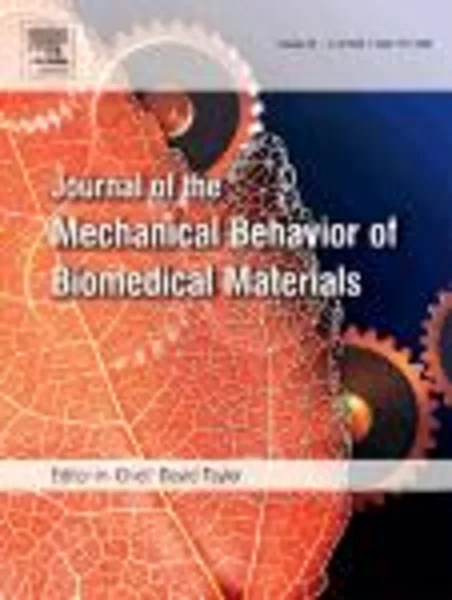-
microtensile bond strength of etch and rinse versus self-etch adhesive systems
جزئیات بیشتر مقاله- تاریخ ارائه: 1394/01/01
- تاریخ انتشار در تی پی بین: 1394/01/01
- تعداد بازدید: 616
- تعداد پرسش و پاسخ ها: 0
- شماره تماس دبیرخانه رویداد: -
the aim of this study was to compare the microtensile bond strength of the etch and rinse adhesive versus one-component or two-component self-etch adhesives. twelve intact human molar teeth were cleaned and the occlusal enamel of the teeth was removed. the exposed dentin surfaces were polished and rinsed, and the adhesives were applied. a microhybride composite resin was applied to form specimens of 4 mm height and 6 mm diameter. the specimens were sectioned perpendicular to the adhesive interface to produce dentin–resin composite sticks, with an adhesive area of approximately 1.4 mm2. the sticks were subjected to tensile loading until failure occurred. the debonded areas were examined with a scanning electron microscope to determine the site of failure. the results showed that the microtensile bond strength of the etch and rinse adhesive was higher than that of one-component or two-component self-etch adhesives. the scanning electron microscope examination of the dentin surfaces revealed adhesive and mixed modes of failure. the adhesive mode of failure occurred at the adhesive/dentin interface, while the mixed mode of failure occurred partially in the composite and partially at the adhesive/dentin interface. it was concluded that the etch and rinse adhesive had higher microtensile bond strength when compared to that of the self-etch adhesives.
مقالات جدیدترین رویدادها
-
استفاده از تحلیل اهمیت-عملکرد در ارائه الگوی مدیریت خلاقیت سازمانی و ارائه راهکار جهت بهبود
-
بررسی تاثیر ارزش وجوه نقد مازاد بر ساختار سرمایه شرکت های پذیرفته شده در بورس اوراق بهادار تهران
-
بررسی تأثیر سطح افشای ریسک بر قرارداد بدهی شرکت های پذیرفته شده در بورس اوراق بهادار تهران
-
بررسی تأثیر رتبه بندی اعتباری مبتنی بر مدل امتیاز بازار نوظهور بر نقد شوندگی سهام با تأکید بر خصوصی سازی شرکت ها
-
تأثیر آمیخته بازاریابی پوشاک ایرانی بر تصویر ذهنی مشتری پوشاک ایرانی (هاکوپیان)
-
بررسی رابطه بین سبک روابط کاری و سبک رهبری با جو سازمانی و نوآوری سازمانی در یک سازمان صنعتی
-
دیدگاه پزشکان عمومی در مورد وضعیت و انگیزه های شرکت کنندگان در برنامه های بازآموزی و چگونگی اجرای آن
-
استخراج آب از منابع زیرزمینی بر اساس مدیریت هزینه (مطالعه موردی: دشت سیلوانا-زیوه)
-
بررسی تئوری شهرسازی در جهت معماری (نمونه موردی کرمان)
-
استفاده از انرژی خورشیدی در ساختمان
مقالات جدیدترین ژورنال ها
-
مدیریت و بررسی افسردگی دانش آموزان دختر مقطع متوسطه دوم در دروان کرونا در شهرستان دزفول
-
مدیریت و بررسی خرد سیاسی در اندیشه ی فردوسی در ادب ایران
-
واکاوی و مدیریت توصیفی قلمدان(جاکلیدی)ضریح در موزه آستان قدس رضوی
-
بررسی تاثیر خلاقیت، دانش و انگیزه کارکنان بر پیشنهادات نوآورانه کارکنان ( مورد مطالعه: هتل های 3 و 4 ستاره استان کرمان)
-
بررسی تاثیر کیفیت سیستم های اطلاعاتی بر تصمیم گیری موفق در شرکتهای تولیدی استان اصفهان (مورد مطالعه: مدیران شرکتهای تولیدی استان اصفهان)
-
نشانه های بصری معراج پیامبر در نگارگری عثمانی، مطالعه ی موردی نسخه اسکندرنامه ی احمدی
-
دستیابی به شاخص های مطلوب سکونت شهری در بافت های فرسوده تاریخی ایران؛ نمونه موردی: بافت فرسوده تاریخی شهر اردبیل
-
همبستگی بین نگرش های مذهبی و سلامت عمومی در دختران مقطع دبیرستان
-
ساخت و تحلیل دستگاه اندازه گیری و مقایسه ضربه کلت
-
modelling of bonded post-tensioned concrete cantilever beams under flexural loading




سوال خود را در مورد این مقاله مطرح نمایید :